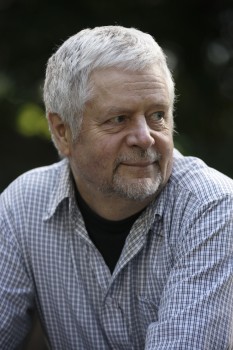Tag: aphorisms
Mickeys
Issue 4/1987 | Archives online, Fiction, Prose
Maskuja (‘Mickeys’, WSOY, 1987). Introduction by Erkka Lehtola
When I was on a trip with my friend and there was a wide enough bed in the southern night for the two of us to sleep easily side by side, it was a big shock when, even so, I sprang up suddenly at midnight, and my friend did too, and there was a thud as our heads banged together and we saw stars, and in the morning no one could understand why we were so stupefied.
Micky ran to the barber’s. ‘Are you free? Could you do something with my hair?’ He took his cap off. ‘Look, all the hairs are loose at the other end.’
Once, out of sheer absent-mindedness, he was officiously helping someone onto a tram from behind; he grabbed their bottom, got a furious look, and spluttered,’ Sorry, but I thought it was your bag.’ More…
Aphorisms
Issue 4/1986 | Archives online, Fiction, Prose
Aphorisms from Pahojen henkien historia (‘A history of evil spirits’, 1986). Markku Envall’s essay on aphorism
Do not set out in the wrong mood, at the wrong moment, for the wrong place.
Learn to distinguish these from one another, for it is an impossible task.
Do not admit to changes in yourself, say rather that your associates vary.
And that your relationships are changeable. But do not say this of yourself.
Not knowing a person should not be regarded as sufficient reason for not making his acquaintance. More…
The power game
Issue 2/1984 | Archives online, Fiction, Prose
Puhua, vastata, opettaa (‘Speak, answer, teach’, 1972) could be called a collection of aphorisms or poems; the pieces resemble prose in having a connected plot, but they certainly are not narrative prose. Ikuisen rauhan aika (‘A time of eternal peace’, 1981) continues this approach. The title alludes ironically to Kant’s Zum Ewigen Frieden, mentioned in the text; ‘eternal peace’ is funereal for Haavikko.
In his ‘aphorisms’ Haavikko is discovering new methods of discourse for his abiding preoccupation: the power game. All organizations, he thinks, observe the rules of this sport – states, armies, businesses, churches. Any powerful institution wages war in its own way, applying the ruthless military code to autonomous survival, control, aggrandizement, and still more power. No morality – the question is: who wins? ‘I often entertain myself by translating historical events into the jargon of business management, or business promotion into war.’
‘What is a goal for the organization is a crime for the individual.’ Is Haavikko an abysmal pessimist, a cynic? He would himself consider that cynicism is something else: a would-be credulous idealism, plucking out its own eyes, promoting evil through ignorance. As for reality, ‘the world – the world’s a chair that’s pulled from under you. No floor’, says Mr Östanskog in the eponymous play. Reading out the rules of a mindless and cruel sport, without frills, softening qualifications, or groundless hopes, Haavikko is in the tradition of those moralists of the Middle Ages, who wrote tracts denouncing the perversity and madness of ‘the world’ – which is ‘full of work-of-art-resembling works of art, in various colours, book-resembling texts, people-resembling people’.
Kai Laitinen
Speak, answer, teach
When people begin to desire equal rights, fair shares, the right to decide for themselves, to choose
one cannot tell them: You are asking for goods that cannot be made.
One cannot say that when they are manufactured they vanish, and when they are increased they decrease all the time. More…

